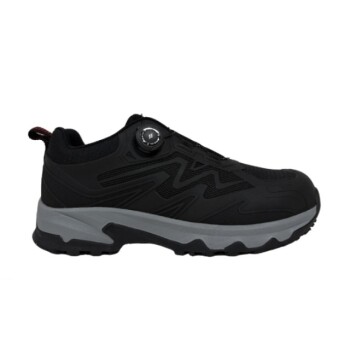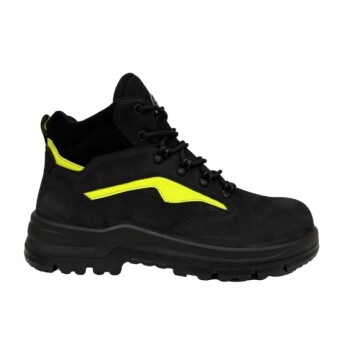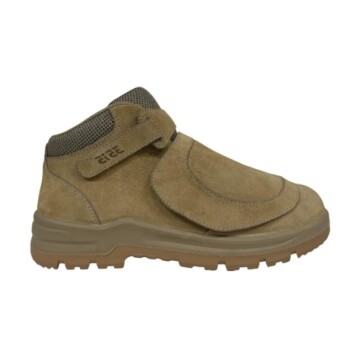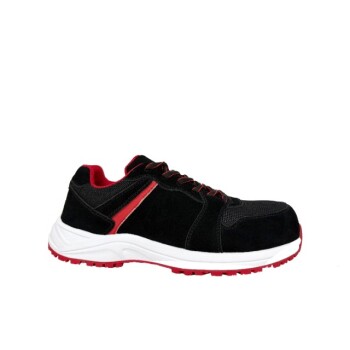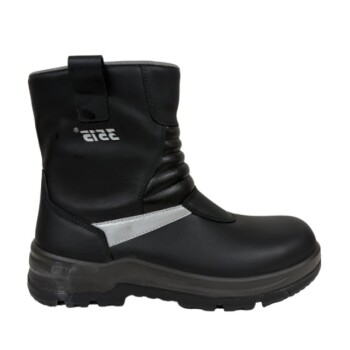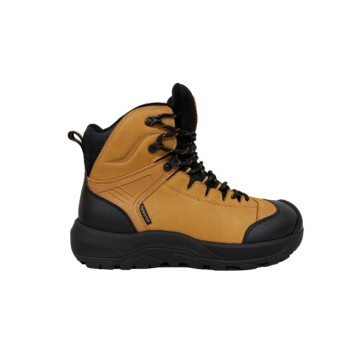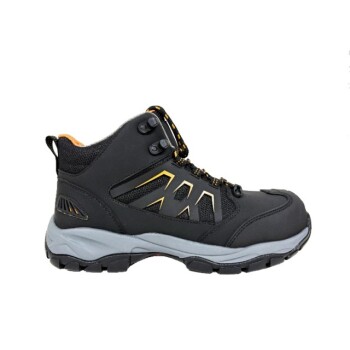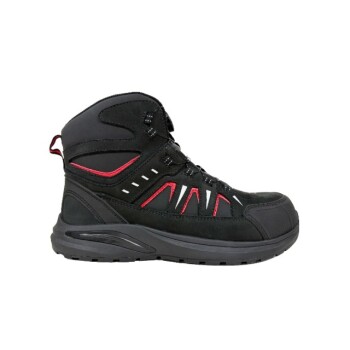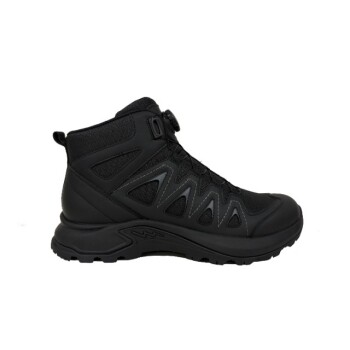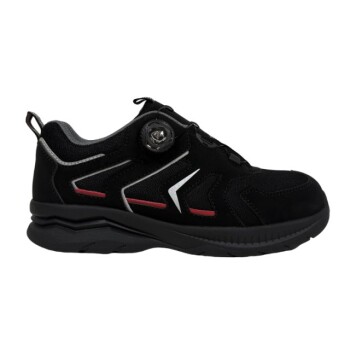At their core, corporate safety footwear programs are a strategic tool for proactive risk management. Their purpose is to go beyond simple compliance by systematically protecting employees from common workplace hazards. These programs help build a robust safety culture by providing the correct protective equipment, which demonstrably reduces foot-related injuries and their associated costs.
A successful safety footwear program is more than just a procurement policy; it is a comprehensive system designed to ensure the right employee receives the right protection for their specific job risk, preventing injuries before they occur and minimizing organizational liability.
Beyond Compliance: The Pillars of a Strong Program
A truly effective safety footwear program is built on several key principles that transform it from a cost center into a strategic asset for the organization.
Centralizing Risk Assessment
The foundation of any program is a thorough hazard assessment. This involves identifying the specific risks present in different work areas, such as impact from falling objects, punctures from sharp materials, electrical hazards, or slip-and-fall risks on wet surfaces.
Ensuring Correct Footwear Specification
Once risks are identified, the program ensures employees are equipped with footwear that has the correct protective features. This means matching the hazard to the specification, whether it's a steel toe for impact, a puncture-resistant sole, electrical hazard (EH) rating, or a slip-resistant outsole.
Streamlining Procurement
A formal program simplifies how employees acquire their safety footwear. This is often managed through voucher systems, subsidies, or partnerships with specific vendors, ensuring employees get properly fitted, compliant footwear without logistical friction.
Driving Employee Adoption
The safest boot is the one an employee actually wears. A good program prioritizes comfort and fit, often by offering a choice of approved styles. This focus on the user experience is critical for ensuring consistent compliance and buy-in.
The Tangible Business Impact
Implementing a formal program delivers clear, measurable benefits that extend far beyond the safety department.
Drastic Reduction in Injuries
Foot injuries are among the most common preventable workplace incidents. A well-managed program directly reduces the frequency and severity of injuries like fractures, punctures, and sprains, which are disruptive and costly.
Lowering Direct and Indirect Costs
Fewer injuries lead to a direct reduction in workers' compensation claims, medical expenses, and potential regulatory fines. It also reduces indirect costs like lost productivity, the need for replacement labor, and administrative overhead.
Fostering a Proactive Safety Culture
When a company invests in a high-quality, well-organized PPE program, it sends a powerful message that it values its employees' well-being. This tangible commitment strengthens trust and reinforces a culture where safety is a shared responsibility.
Common Pitfalls to Avoid
Even with the best intentions, safety footwear programs can fail to deliver results if they fall into common traps.
The "One-Size-Fits-All" Mistake
Mandating a single type of safety boot for an entire workforce is a frequent error. This approach ignores the fact that different roles carry vastly different risks, leading to some employees being under-protected and others being encumbered by unnecessary features.
Overlooking Comfort and Fit
If the provided footwear is uncomfortable, heavy, or ill-fitting, employees are less likely to wear it correctly, or may even find ways to avoid wearing it at all. This completely undermines the program's primary goal.
Neglecting Program Management
A "set it and forget it" approach is ineffective. A program requires ongoing management to review new footwear technology, reassess workplace hazards, and gather employee feedback to ensure it remains relevant and effective.
Making the Right Choice for Your Goal
To implement a successful program, align your strategy with your primary organizational objective.
- If your primary focus is reducing injury rates: Prioritize a detailed, role-specific hazard assessment to ensure every employee is matched with the correct protective footwear.
- If your primary focus is improving safety culture: Involve employees in the selection process by offering a few pre-approved, compliant options to increase comfort, buy-in, and morale.
- If your primary focus is cost control and efficiency: Implement a managed voucher system with approved vendors to streamline purchasing, control spending, and simplify administration.
Ultimately, a well-executed program transforms safety footwear from a mandatory expense into a high-return investment in the health of your people and your business.
Summary Table:
| Program Goal | Key Action | Expected Outcome |
|---|---|---|
| Reduce Injury Rates | Role-specific hazard assessment | Fewer foot-related incidents |
| Improve Safety Culture | Employee choice in footwear styles | Higher adoption and morale |
| Control Costs | Managed voucher/vendor system | Streamlined procurement and spending |
Ready to build a world-class safety footwear program for your workforce?
As a large-scale manufacturer, 3515 produces a comprehensive range of certified safety footwear for distributors, brand owners, and bulk clients. We provide the durable, comfortable, and compliant boots your program needs to protect employees and deliver a strong return on investment.
Contact our experts today to discuss your requirements and receive a tailored solution.
Related Products
- Premium Flame-Retardant Waterproof Safety Boots and Shoes
- Safety Footwear Wholesale Manufacturer for Custom OEM/ODM Production
- Advanced KPU Athletic Safety Shoe with Steel Toe Cap Anti-Slip Rotary Lacing System
- Wholesale Premium Waterproof Nubuck Safety Shoes Boots
- Premium Suede Metatarsal Guard Safety Boots Work Shoes
People Also Ask
- What are the benefits of proper safety footwear beyond physical protection? Boost Productivity & Morale
- What are the requirements for oilfield boots? Essential Safety & Durability Features
- What additional protection levels were introduced beyond the standard S1-S3 ratings? S4 to S7 Explained
- What factors should be considered when choosing the appropriate type of safety footwear? A Guide to Maximum Protection
- What features make oilfield safety shoes resistant to heat and flames? Protect Against Extreme Temperatures


